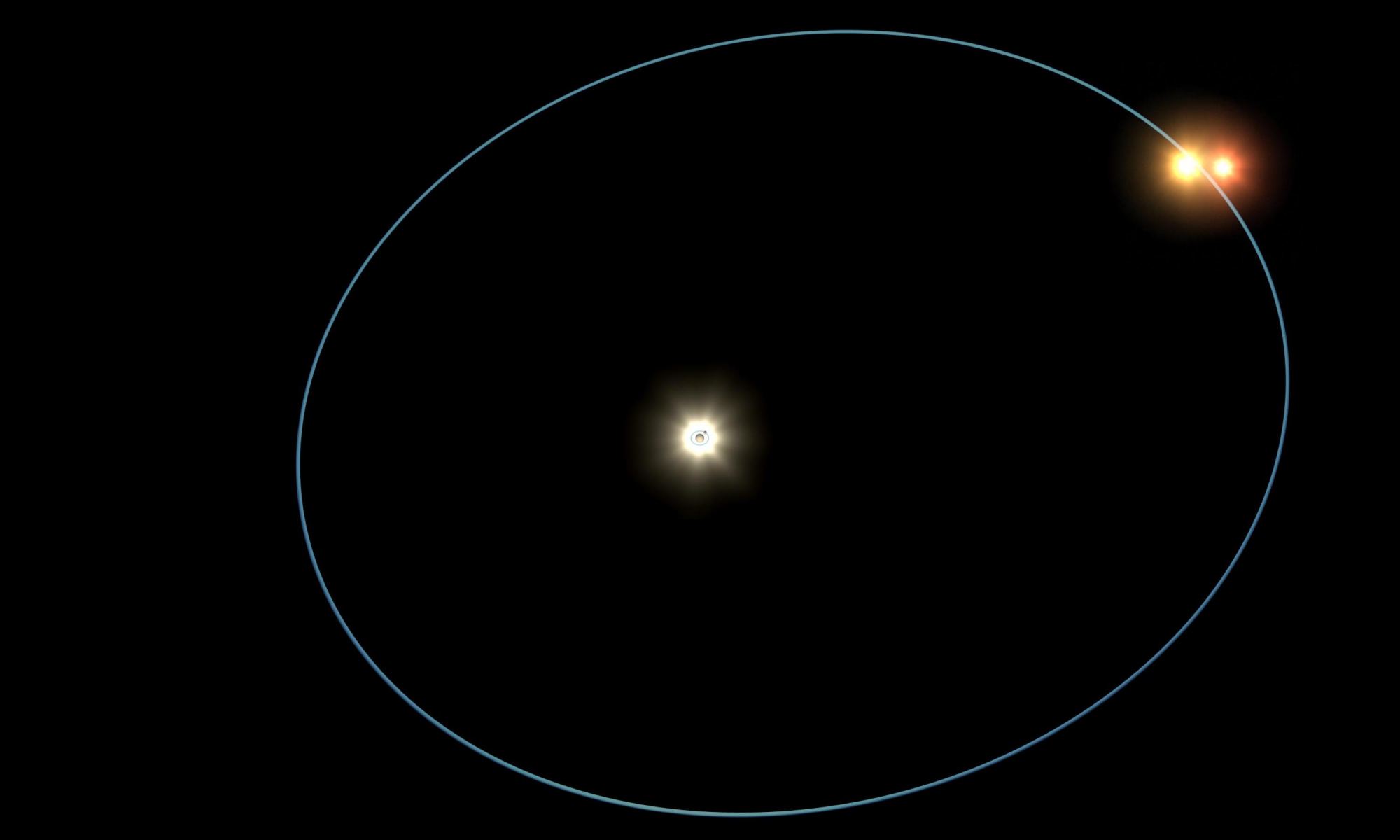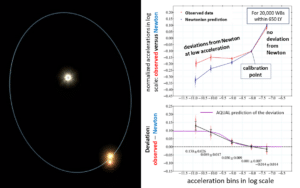
Questioning the theories of Newton and Einstein
The traditional understanding of gravity, shaped by the work of Newton and Einstein, is being tested by new observations. Professor Kyu Hyun-chae, using data from the Gaia Space Observatory, has studied the motions of thousands of binary stars. His results point to behaviors that run counter to well-established theories of gravity, even those of dark matter and dark energy. If validated, these conclusions could redefine our perception of the forces that shape the universe.
Gravity, the fundamental force that governs the motions of celestial bodies, was defined long ago by the work of Newton and Einstein. However, in the age of space telescopes and advanced technology, our traditional designs are being tested.
Recently, a study by Professor Kyu Hyun-chae of Sejong University challenges our understanding of gravity. By analyzing the dynamics of 26,500 large binary stars with data from the European Space Agency’s Gaia space observatory, Chai highlighted anomalies in the stars’ orbital motions. These anomalies indicate that Newton and Einstein’s laws of gravity may not apply under conditions of low acceleration.
These discoveries could redefine our perception of the forces that shape the universe and validate a new theory of gravity. His work has been published in the journal Astrophysical Journal.
A challenge to theories created by binary stars
Binary stars are pairs of stars orbiting each other. Chai noticed that when these stars show low accelerations, they reveal interesting behavior: their acceleration is 30 to 40 percent higher than current models predict. Specifically, while Einstein’s general relativity and Newton’s law of gravity predict some acceleration for these stars, observations show that they are moving faster. This indicates that under certain low acceleration conditions our current theories may not be complete or accurate.

However, this anomaly does not manifest itself consistently. For accelerations greater than 10 nm/sec², binary stars behave exactly as predicted by Newton’s and Einstein’s theories. These observations therefore show consistency with conventional predictions at higher accelerations, but reveal significant discrepancies at lower accelerations. This duality raises fundamental questions about the nature of gravity and how we understand it.
Mond’s theory, or variant of dark matter
Forty years ago, the landscape of theoretical physics was rocked by a bold proposal by Mordechai Milgrom. Faced with the observed anomalies in the motions of galaxies, which did not match predictions based on gravity as we understand it, Milgrom offered a new perspective. Instead of postulating the existence of invisible dark matter to explain these anomalies, he suggested that it is our understanding of gravity itself that needs to be revised.
His theory, called Modified Newtonian Dynamics (MOND), suggests that Newton’s law of gravity, which works well on familiar scales, might require modifications at very low accelerations, such as those seen in the outer regions of galaxies. Rather than attributing the rotation curves of galaxies to the presence of dark matter, MOND suggests that gravity itself may behave differently at these lower accelerations.
AQUAL, another theory of gravity
Beyond the MOND theory, another proposal has been made to explain the gravitational anomalies observed at low acceleration: the AQUAL theory. The name “AQUAL” comes from “A QUAdratic Lagrangian,” which means it is based on a specific mathematical formula for gravity. This theory was co-developed by Mordehai Milgrom, the same physicist behind MOND, and Jacob Bekenstein, a famous physicist who died in 2015.
The AQUAL theory is an attempt to provide a more fundamental basis for modified Newtonian dynamics (MOND). It changes the way gravity is mathematically described, especially at low acceleration. The main idea is that the force of gravity may not follow standard Newton’s or Einstein’s laws when objects are moving very slowly.
Chai’s observations of binary stars seem to support this theory. The anomalies he observed in the motion of the stars match what AQUAL theory predicts. These analyzes thus provide potential evidence that our current understanding of gravity needs to be revised, at least under certain specific circumstances.
Implications for cosmology
You want to remove ads from the site
While continuing to support us ?
It’s simple, just sign up!
At the moment, 20% off On the annual subscription!
Chai’s observations, if validated by the scientific community, could have profound implications for our understanding of the universe. Einstein’s general relativity is currently a cornerstone of our understanding of gravity, describing how masses curve space-time around them. However, if the anomalies observed at low acceleration are confirmed, such as those described by MOND, this means that general relativity is not complete or accurate under certain conditions.
This assertion will lead to the need for a new theory that includes both general relativity and the phenomena described by MOND. This extended theory should explain the observed motions without resorting to concepts such as dark matter or dark energy.
Right now, dark matter and dark energy are central to our cosmological model. Milgrom states in a communication :” Chai’s discovery is the result of a very complex analysis of the latest data. But to discover such significance, It’s already a long way off. We need confirmation with independent analyses, preferably with better prospective data “.
source : Astrophysical Journal

“Incurable web evangelist. Hipster-friendly gamer. Award-winning entrepreneur. Falls down a lot.”
